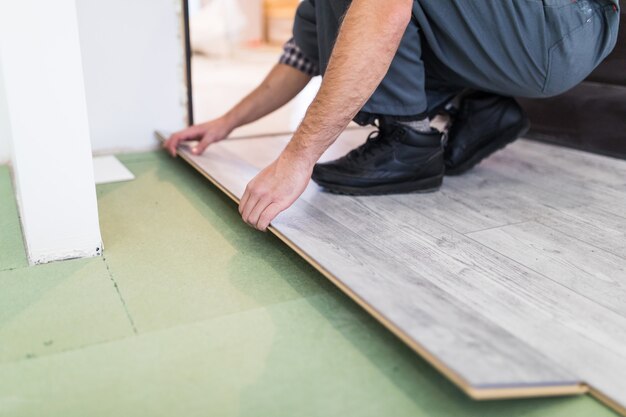
The Versatility of PVC Foam Board in Modern Construction: PVC Vs WPC
because of its remarkable resilience and lightweight structure. Made of polyvinyl chloride, this material is highly valued for its resilience to different environmental variables and natural stiffness. Its closed-cell construction protects it from moisture and produces a homogeneous, smooth surface that is highly adjustable to a wide range of applications.
Advantages Of PVC Foam Boards
PVC board is genuinely unique due to its exceptional adaptability. This material has shown to be versatile in a variety of sectors, from building projects to furniture and signage to exhibits. Because of how simple it is to make and how well it can replicate the look of wood, it is a recommended choice for both indoor and outdoor applications. PVC foam board is becoming more and more well-known in the construction industry, especially for its use in making door and window frames. This ground-breaking application is changing the building industry by offering a strong yet lightweight substitute for conventional materials.
Furthermore, PVC board’s capacity to withstand harsh weather conditions attests to its endurance. It does not decay or warp as wood does since it is not susceptible to moisture. Due to its innate resilience, PVC board greatly increases the lifespan of projects, making it a financially feasible option for long-term projects. Its capacity to withstand chemicals and UV radiation further increases its appropriateness for outdoor applications and guarantees that it will keep its structural integrity even in the most extreme weather conditions.
PVC Foam Board and WPC Board Comparison
When it comes to building supplies, comparing PVC board with Wood-Plastic Composite (WPC) board is an important consideration when choosing the right product for a variety of project needs.
- Material Composition: Polyvinyl chloride, the main ingredient in PVC board, gives it its unique stiffness. On the other hand, WPC chokhat combines the robustness of plastic with the organic beauty of wood, creating a harmonic blend of thermoplastics and wood fibers. The decision between the two is based on the environmental effect, structural requirements, and desired aesthetics.
- Weight and Density: PVC foam board is naturally lightweight, which makes it easy to handle and carry. This makes it perfect for applications where weight is an important factor. On the other hand, WPC chokhat offers a well-balanced combination of toughness and manageability; it is just not as lightweight as PVC. The particular load-bearing needs of the planned application will determine which of the two is best.
- Environmental Impact: As environmentally friendly substitutes for conventional materials like wood, PVC board and WPC board are both available. The recyclable nature of PVC board supports sustainability initiatives and is consistent with eco-friendly behaviors. Conversely, wood fibers are included in WPC board, adding a sustainable component to its composition. The decision between the two materials may be made with the project’s environmentally friendly goals in mind, enabling a thoughtful approach.
Essentially, the subtle distinctions between PVC and WPC chokhat highlight how crucial it is to match material selections to the particular requirements of any building project in order to achieve the best possible performance, sustainability, and visual appeal.
The Leading Company In WPC Manufacturing
In the wide world of Wood-Plastic Composite (WPC) solutions and PVC foam board, JKD Plastic is a trailblazer that is changing the building materials market. Reputed as one of the top WPC manufacturers in India, they skillfully combine innovation with a steadfast dedication to quality. This company’s rise to fame may be attributed to its proficiency in producing WPC, which is evidence of the company’s commitment to expanding the realm of construction possibilities. By making use of PVC board’s inherent adaptability, they have become a unique player in the market and a force to be reckoned with, taking building projects to new heights. The company’s innovative approach to WPC solutions demonstrates its dedication to innovation.
Beyond what is typically expected, JKD Plastic offers full solutions in addition to materials. PVC board’s adaptability serves as a blank canvas for their inventiveness, enabling the company to create WPC that not only satisfies but beyond industry requirements. Acknowledged as a leader, they are dedicated to excellence from the foundation of their business to its products. Precision is incorporated into every stage of the production process to guarantee that every WPC chokhat made by them is the epitome of robustness, style, and utility.
Conclusion
The remarkable flexibility and resilience of PVC foam board are highlighted by its versatility in contemporary construction, especially when compared to WPC board. JKD is a prominent participant in this ever-changing industry, distinguished by its ability to skillfully blend innovation and uncompromising quality in WPC manufacture.
Their inventive usage of PVC foam board to create WPC board is proof of their dedication to extending the possibilities in a building. They are committed to providing comprehensive solutions that go above and beyond industry norms, and it does so by maintaining a high degree of quality and precision. Construction projects that select JKD Plastic get a dependable partner that is dedicated to pushing the limits of innovation and quality.


